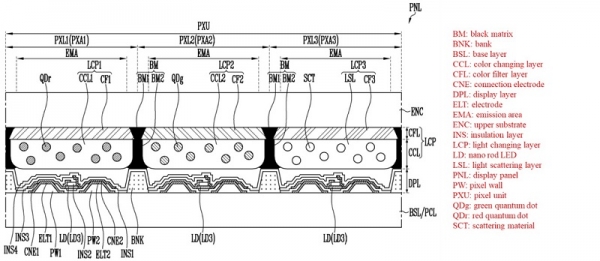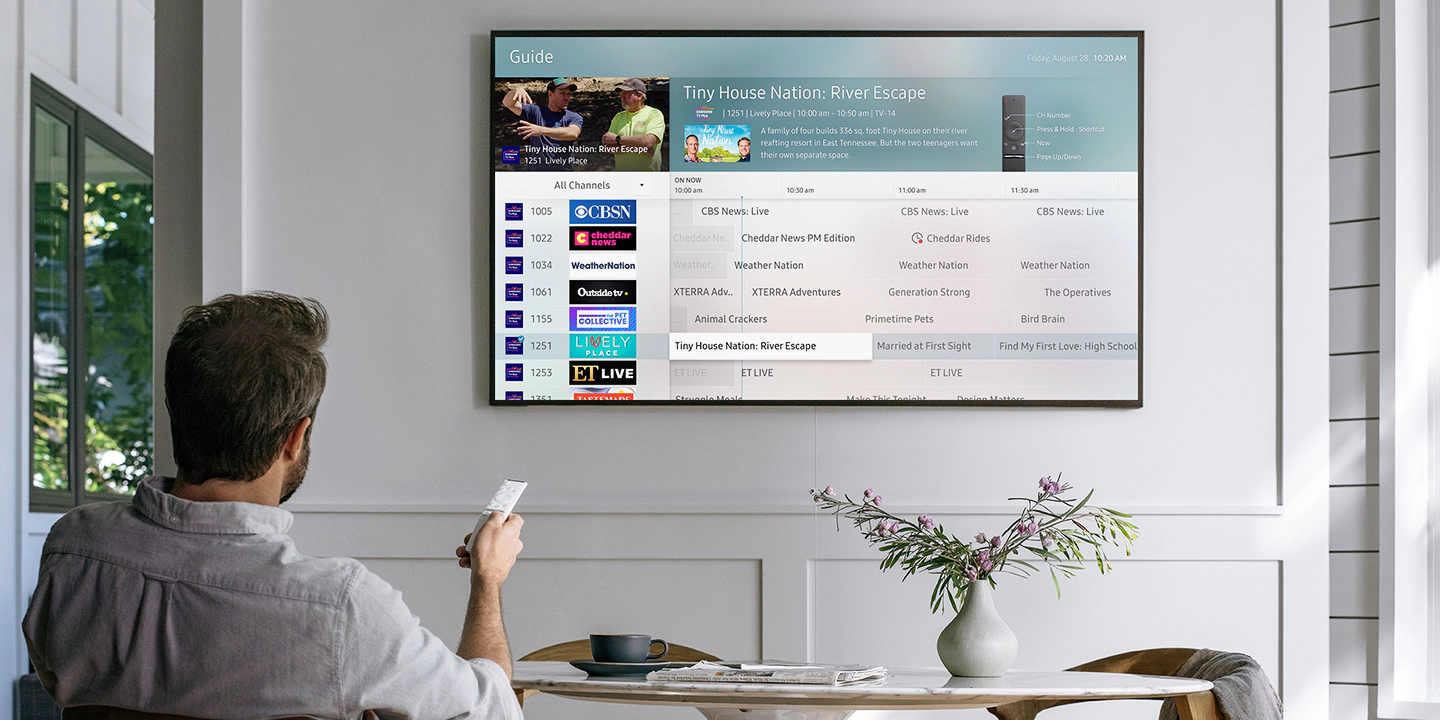
Samsung Electronics makes TVs using display panels from Samsung Display. UBI Research reports that Samsung Display has been fine-tuning its QNED (Quantum Dot Nanorod LED) display technology to satisfy Samsung Electronics' extremely high expectations. The South Korean firm aims to use quantum dot technology to surpass the color gamut provided by OLED displays. It also wants a display technology that offers excellent HDR performance and high brightness without getting hampered by the burn-in issue seen on OLED TVs.
UBI Research has managed to get its hands on QNED-related patents filed by Samsung Display. After studying them, the firm “confirms” that the South Korean firm's QNED display technology is capable of offering the best image quality.
According to the patents, Samsung Display's QNED technology uses a stack of quantum dot material, a color filter (color conversion layers), and nanorod LEDs on top of TFTs (Thin Film Transistors). This TFT plane uses the same structure as that of OLEDs: 3 transistors and 1 capacitor. However, the difference between OLED and QNED is that the former has electrodes (anode and cathode) and the electrode line above and below the light-emitting material. On the other hand, the QNED display has the electrodes and the electrode line on the same plane.
The QNED display panel also features an additional reflective electrode to increase luminance. The nanorod LEDs are sprayed onto a given pixel area using advanced inkjet printers, and the nanorods are then aligned using electric signals to fine-tune the performance.















